Learning to play the flute requires memorizing which finger positions produce each note. This can be challenging for beginners and advanced players alike. However, flute fingering charts provide a helpful visual aid to master the correlations between fingering patterns and resulting notes. A fingering chart diagrams the precise keys and holes that must be covered to play any given note. With a chart, you can quickly reference the proper finger placement needed to play any note you encounter in new music.
Rather than memorizing countless combinations, you can use the chart as you practice until the positions become intuitive. Whether you are starting flute or working on difficult compositions, a fingering chart prevents frustration. In this article, we will explore the benefits of using a downloadable flute fingering chart PDF to support your learning. The chart will help cement note patterns to advance your playing skills.
Table of Contents
What Is A Flute Fingering Chart ?

A flute fingering chart is a diagram that visually maps out which keys and holes on the flute must be pressed or left open to produce each musical note. It provides a quick reference guide for the proper finger placement required to play the full range of notes on the instrument. Flute fingering charts display the notes of the Western chromatic scale on the musical staff alongside illustrations of the corresponding finger positions.
Charts color code the keys to easily distinguish when they should be closed or remain open. Simple and complex finger patterns are precisely depicted. Flute fingering charts offer a valuable tool for musicians reading and learning new music by allowing them to instantly look up unfamiliar note fingerings during practice without memorizing countless combinations. They help cement the relationship between fingering and sound.
Flute Fingering Chart Printable
Preparing for a job interview is critical for making a strong impression. An interview PDF provides a framework to organize your key talking points.
The PDF covers common questions about your background, skills, goals, etc. It has space to script responses that highlight your qualifications. Practicing answers using the PDF builds confidence for the real thing. You can customize responses based on the specific role and company.
An interview PDF ensures you get core messages across. It prevents anxiety-induced rambling or mind blanks under pressure. Rehearsing the PDF questions makes interviews feel like natural conversation. The PDF helps craft relatable stories that showcase your fit. With thoughts organized ahead of time, you can focus on active listening and engagement during the interview. Thoughtful preparation with an interview PDF sets you up for success in getting hired.
Fundamentals of Flute Fingering
The flute is a delicate and intricate instrument, and mastering the finger placement is essential for producing beautiful, clear tones. Understanding the basics of hand positioning, the role of the thumb and pinky fingers, and the importance of finger placement precision can lead to efficient practice and skillful playing.
1. Basic Hand Position
The foundation of good flute playing lies in the correct hand and finger positions.
- Left Hand Position:
- Your left hand fingers will cover the keys at the top of the flute, closest to your face when playing.
- The index, middle, and ring fingers of your left hand will rest on the first three keys, respectively. The pinky will be used for the lever situated further away on the foot joint.
- Ensure that your fingers are curved and relaxed, creating a natural arc over the keys.
- Right Hand Position:
- The fingers of the right hand cover the bottom keys.
- Like the left hand, your fingers should be curved, with the index, middle, and ring fingers covering the subsequent three keys.
- Your thumb should support the flute from underneath, resting against the back of the instrument. It should never press any key in this position.
2. Use of Thumb and Pinky Fingers
- Left Hand Thumb:
- While the thumb of the left hand doesn’t directly press any keys, it’s crucial in balancing the flute and giving it stability. It will rest beneath the flute, acting as a primary support point.
- Right Hand Thumb:
- This thumb plays an essential role in supporting the instrument. It should be placed on the flute’s underside, offering balance. There shouldn’t be excessive pressure; the flute should feel stable yet light.
- Left Hand Pinky Finger:
- The pinky of the left hand has a unique role as it is responsible for the keys on the foot joint. It is crucial for transitioning to the lower notes. Always ensure that it remains flexible and relaxed to move quickly and with ease.
- Right Hand Pinky Finger:
- The pinky of the right hand generally remains free and does not cover any key on a standard flute. However, it’s essential to keep it relaxed and close to the instrument to maintain balance and prevent undue tension.
3. Importance of Finger Placement Precision
- Cleaner Sound: Correct finger placement ensures that the holes on the flute are entirely covered. Even slight misplacement can lead to airy or fuzzy sounds, affecting the overall tonal quality.
- Faster Finger Transitions: As you progress, you’ll encounter rapid sequences of notes. Precise finger placement allows for smoother and quicker transitions between notes, leading to fluid playing.
- Reduced Strain: Proper finger positioning reduces the risk of strain and injury. Over time, incorrect positioning can lead to issues like carpal tunnel or tendinitis.
- Greater Musical Expression: Mastery over finger placement gives players the freedom to focus on musicality, dynamics, and expressiveness. A flutist who isn’t struggling with finger positioning can pay more attention to phrasing, tone, and other advanced aspects of playing.
Note-by-Note Fingering Guide
The flute is an instrument with a wide range, from the deep tones of the low register to the bright, piercing notes of the high register. Navigating this range with precision requires a detailed understanding of fingering techniques.
a. Low Register:
The low register of the flute, typically starting from Middle C (or B if the flute has a B-foot joint) up to the B flat above it, is characterized by its warm and resonant tones. To achieve these tones, the keys of the flute need to be adequately covered. The fundamental fingerings here involve keeping most of the keys closed. As you ascend the scale, you’ll sequentially lift fingers, starting from the pinky of the right hand upwards to the index finger of the left hand. One thing to note is the position of the left-hand thumb: for certain notes like D and E flat, the thumb key needs to be pressed. Ensuring that the pads of your fingers fully cover the holes without any gaps is crucial in this register to prevent a thin or airy sound, especially given the natural resistance of these deeper notes.
b. Middle Register:
Transitioning from the low to the middle register, typically from the B or C above Middle C to the B or C an octave higher, involves a shift in embouchure as well as finger placement. The middle register, while still robust, carries with it a more luminous tonality compared to the low register. Fingering in this range often starts to integrate the use of the left-hand pinky on the foot joint for certain notes. Also, the right hand’s role becomes increasingly significant, especially when navigating notes like F and F#. As with the low register, ensuring fingers cover the keys adequately is essential, but players will also find that slight adjustments in air speed and direction can profoundly affect the tone quality in this register.
c. High Register:
Reaching the high register, which spans from the D above the middle C and beyond, brings with it a bright and sometimes piercing quality of sound. Fingering becomes somewhat more complex, often involving cross-fingerings or alternative fingerings to achieve the right pitch and tone. The embouchure adjustment is especially critical here; a tighter lip aperture and faster air stream are necessary to hit and maintain these high notes. Fingerings can vary based on the specific note, and sometimes alternate fingerings are used to facilitate faster passages or improve intonation. For instance, while playing high E, the pinky finger in the right hand can be used on some flutes to stabilize the instrument and adjust the pitch slightly. Mastery of this register requires not only knowledge of the precise fingerings but also careful control of the embouchure and breath support.
Trills and Alternate Fingerings
Flute playing, with its vast tonal possibilities and nuances, often requires techniques that extend beyond the realm of basic fingering. Among these, trills and alternate fingerings hold special importance, offering both musical flair and practical solutions to specific challenges.
1. Understanding Trills:
Trills are rapid alternations between two adjacent notes, usually starting on the written note and moving to the note directly above it. This technique is used to add ornamentation, expressiveness, and vibrancy to a piece of music. When executing a trill on the flute, the player will rapidly move one finger (or occasionally more, depending on the note combination) while keeping the others stationary. The speed and duration of the trill can vary based on the composer’s intentions or the performer’s interpretation. Mastery of trills requires flexibility and agility in the fingers, as well as an understanding of the specific finger movement required for each note combination.
2. Common Alternate Fingerings:
While the flute has standard fingerings for each note, there are often alternate ways to produce the same pitch. These alternate fingerings can be crucial for various reasons, such as facilitating faster passages, improving intonation in specific registers, or ensuring a smoother transition between certain notes. Some common alternate fingerings include:
- High F#: Besides the standard fingering, another option involves pressing down the first and third fingers on the right hand while keeping the second finger up.
- B flat: The standard method involves pressing the first finger and thumb of the left hand. However, the “thumb B flat” method, which only uses the thumb of the left hand, is popular due to its ease during specific transitions.
- High E: Holding down the pinky of the right hand while playing high E can stabilize the flute and slightly adjust the pitch.
3. When to Use Alternate Fingerings:
Alternate fingerings aren’t always suitable for every situation, so knowing when to employ them is essential. Here are some scenarios where they might be helpful:
- Rapid Passages: In fast sections, using an alternate fingering can reduce the complexity of finger movement, making it easier to maintain speed without sacrificing clarity.
- Improved Intonation: Certain notes might sound sharper or flatter due to the flute’s acoustics, the player’s embouchure, or even atmospheric conditions. Alternate fingerings can adjust the pitch slightly to achieve better intonation.
- Tonal Color: Different fingerings can produce slight variations in the tone color of a note, allowing the flutist to choose one that best fits the musical context.
- Ease of Transition: When moving between certain note combinations, alternate fingerings can offer smoother transitions, reducing the risk of unintended sounds or breaks.
Advanced Techniques in Flute Playing
As flutists journey from basic techniques to more sophisticated ones, the palette of musical expression available to them expands dramatically. Among the advanced techniques that hold a prominent place in this realm are multiphonics, flutter tonguing, and the exploration of quarter tones and extended techniques.
a. Multiphonics:
Diving into the world of multiphonics introduces the flutist to the fascinating capability of producing two or more pitches simultaneously. This technique challenges the conventional wisdom of the flute being a monophonic instrument, producing only one note at a time. Achieving multiphonics involves a combination of specific fingerings, altered embouchure, and controlled air flow. The flutist must find a delicate balance where the flute oscillates between two (or more) notes. While it’s a mesmerizing effect, it’s also intricate, often requiring guidance and extensive experimentation. The resulting sound can vary from harmonious to dissonant, expanding the flute’s tonal capabilities and offering a vast range of expressive possibilities, especially in contemporary compositions.
b. Flutter Tonguing and its Influence on Fingering:
Flutter tonguing is a technique where the flutist rolls their tongue (similar to the Spanish “r”) while blowing into the instrument, producing a unique, rapid tremolo effect. It adds a distinctive texture to the sound, often described as ‘growly’ or ‘raspy.’ While the primary challenge lies in mastering the tongue’s rolling motion, there’s an interconnected relationship between flutter tonguing and fingering. Given the complexity of the sound waves when flutter tonguing, certain fingerings might produce clearer effects than others. The flute’s resonance and response might be different, and flutists often find that adjusting their usual fingerings can aid in achieving the desired sound clarity and intensity. This interconnectedness highlights the importance of understanding the symbiosis between various techniques.
c. Quarter Tones and Extended Techniques:
Beyond the conventional semitones that dominate Western music, there lies the realm of microtones, with quarter tones being a significant aspect of this domain. Quarter tones are pitches situated halfway between the standard chromatic notes. Playing them requires adjustments to the standard fingerings, subtle alterations to the embouchure, and sometimes even specific flute designs. These tones introduce a fresh layer of expressiveness, often seen in Middle Eastern music and modern Western compositions seeking novel tonalities. Apart from quarter tones, the umbrella of extended techniques also includes other sound effects like key clicks, whistle tones, and jet whistles. These techniques push the boundaries of traditional flute sounds, challenging flutists to explore the very extremes of their instrument’s capabilities.
Common Challenges and Solutions in Flute Playing
Like any musical instrument, the flute brings with it a unique set of challenges that require dedication, practice, and understanding to overcome. Navigating these challenges can transform a novice into a seasoned player.
Crossing the “Break”:
The transition between registers, particularly moving from the middle to the high register, is often referred to as crossing the “break”. This transition can be a tricky endeavor for many flutists. As one crosses this break, the flute’s embouchure requires a swift and precise adjustment. A common challenge is the emergence of an airy or cracked tone during this transition. Solutions lie in mastering control over the airstream and embouchure adjustments. Long-tone exercises that focus on the notes immediately below and above the break can be instrumental. This practice allows the flutist to understand the minute embouchure changes required, promoting a smoother transition between registers. Additionally, a continuous and supported airstream is paramount; breathing exercises and diaphragmatic support can aid in this.
Achieving a Stable Tone in the Upper Register:
The upper register of the flute, with its bright and piercing tonal quality, can be daunting. A frequent challenge is maintaining a consistent and stable tone without shrillness. The solution here largely hinges on the player’s embouchure and breath control. A tighter embouchure, directing the airstream downward and into the flute, can help produce a more focused and stable sound. Also, understanding the balance between air speed and pressure is vital; faster air, supported by steady diaphragmatic pressure, often aids in achieving that clear upper register tone. Furthermore, practicing harmonics and overtones can refine the flutist’s embouchure flexibility and strength, enabling better control in this challenging register.
Fast Passage Work and Finger Agility:
For many flutists, navigating rapid passages while maintaining clarity and tonal quality is a formidable challenge. The secret to overcoming this lies in developing finger agility and coordination. Slow practice is a paradoxical yet effective solution. By practicing fast passages at a reduced speed, the flutist can focus on precise finger movement, ensuring that each note is clear and in rhythm. Gradually increasing the tempo with a metronome, while maintaining this precision, can lead to mastery over time. Scales, arpeggios, and technical studies, when practiced methodically, can also enhance finger strength and agility, preparing the player for more intricate works.
Conclusion
Playing the flute requires memorizing which finger positions produce each note. This can be a challenging endeavor for musicians at all skill levels. However, flute fingering charts provide a helpful visual reference. These diagrams map out precisely which keys and holes to cover to play any given note. With a chart, flute players can quickly look up proper finger placements as needed when practicing or reading new music. Rather than memorizing countless combinations, a fingering chart allows you to reinforce the correlations between finger patterns and the notes they produce. Whether you are starting flute or advancing your repertoire, having a fingering chart prevents frustration. In this article, we will explore the benefits of using a downloadable flute fingering chart PDF during your practice. The chart will serve as an essential reference to master note patterns and advance your playing.
FAQs
Are there alternate fingerings for some notes?
Yes, several notes on the flute can be played using alternate fingerings. These can be useful for specific musical contexts, such as faster passages, trills, or to achieve better intonation or tone color.
How do I read a flute fingering chart?
A typical flute fingering chart displays a diagram of the flute with its keys. Notes are often listed vertically, and for each note, the chart will show which keys or holes need to be covered (usually shaded or colored in) and which should be left open.
Can I use the flute fingering chart for piccolo?
While the flute and piccolo share some similarities, they are distinct instruments with some different fingerings, especially in the upper register. It’s advisable to use a fingering chart specifically designed for the piccolo.
Is there a difference in fingering charts between a C-foot and B-foot flute?
The primary difference between a C-foot and B-foot flute is the additional key on the B-foot, allowing for a low B note. A fingering chart for a B-foot flute will include this additional note and its corresponding fingering.
How can I best use a fingering chart while practicing?
Initially, you can place the chart on your music stand alongside your sheet music for easy reference. As you practice scales, exercises, or pieces, glance at the chart as needed. Over time, as you become familiar with the fingerings, you’ll find yourself referring to the chart less frequently.
Do all flutes use the same fingering chart?
While the basic fingerings are consistent across standard concert flutes, variations like the alto flute, bass flute, or piccolo may have slightly different fingerings for certain notes. Additionally, flutes from non-Western traditions, like the bamboo flute, will have entirely different fingering systems.








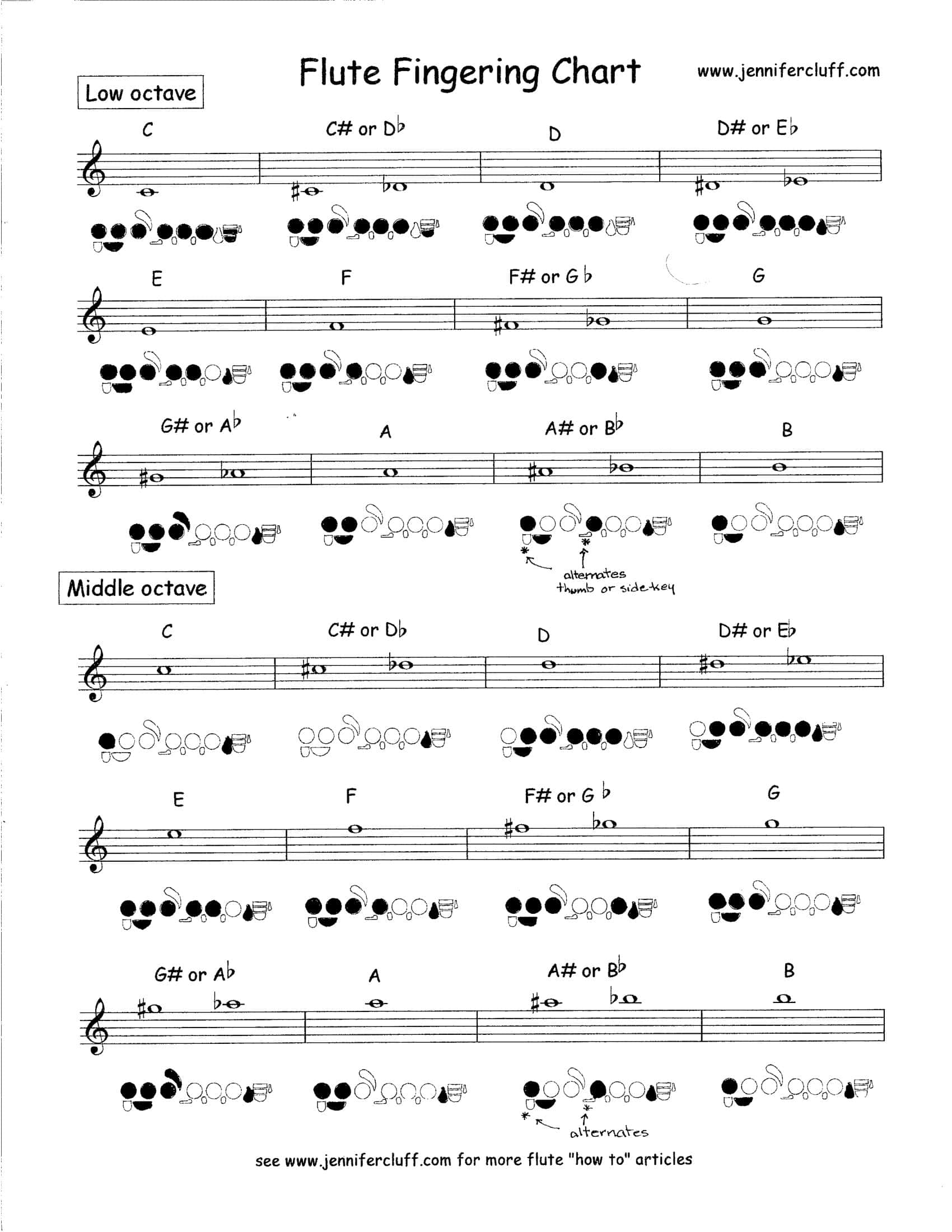
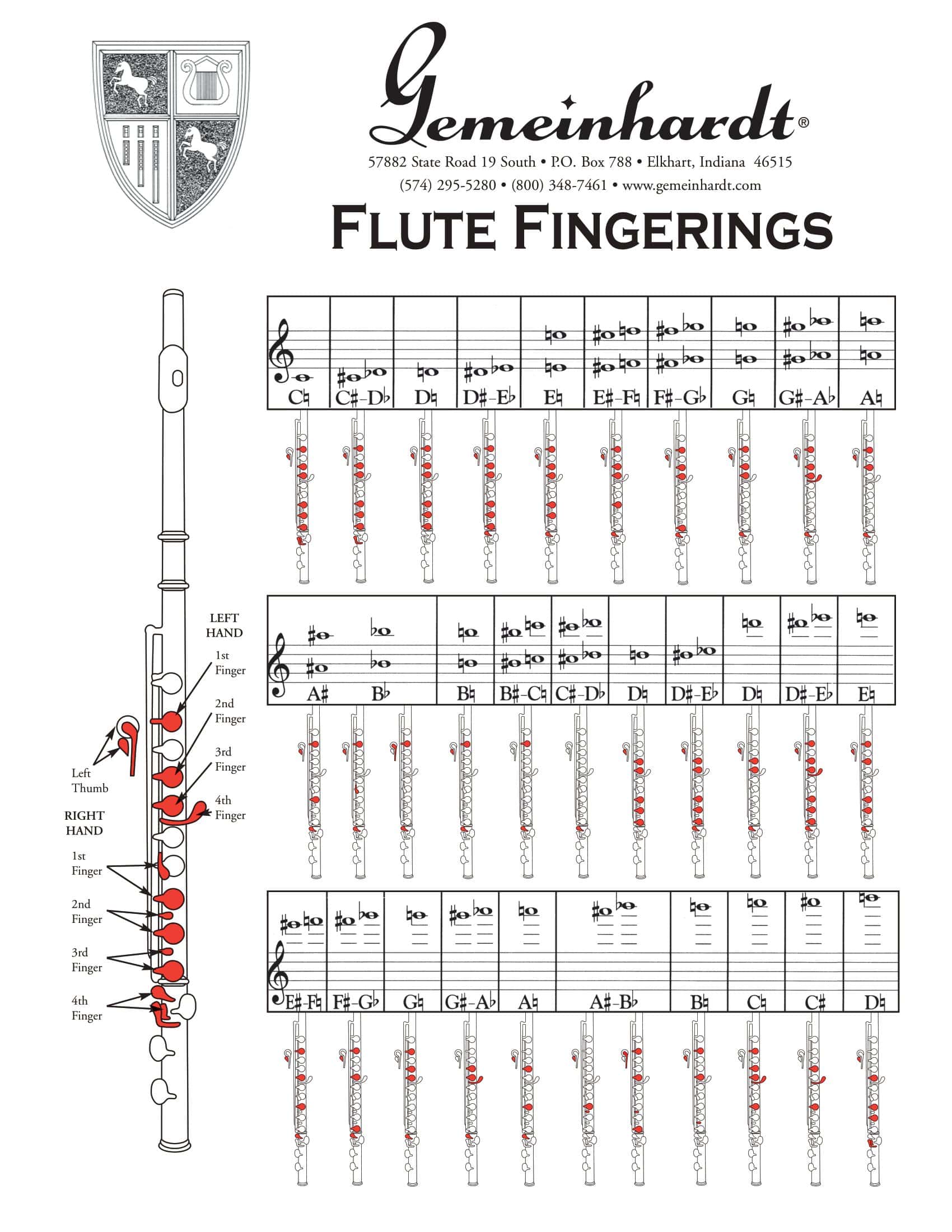







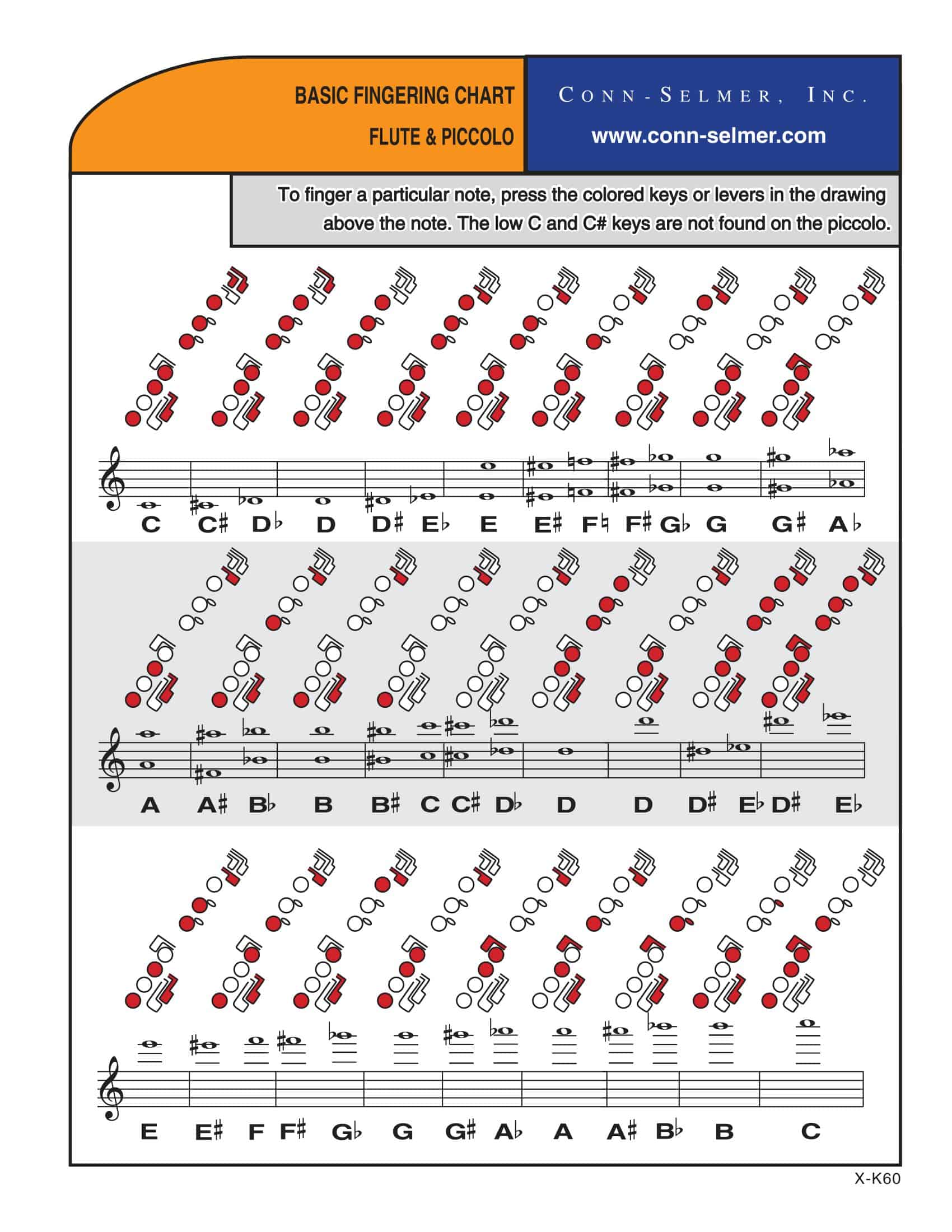
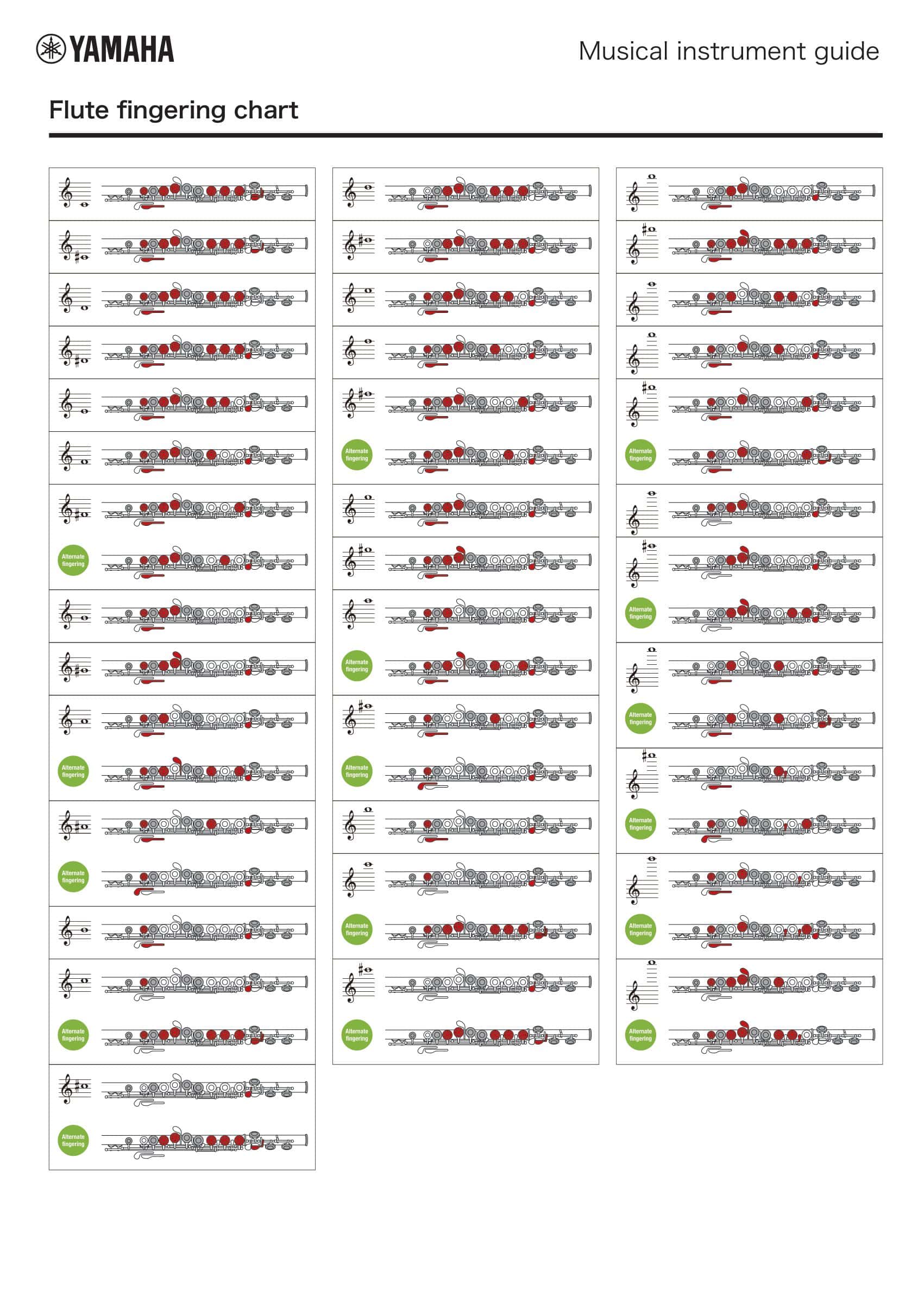
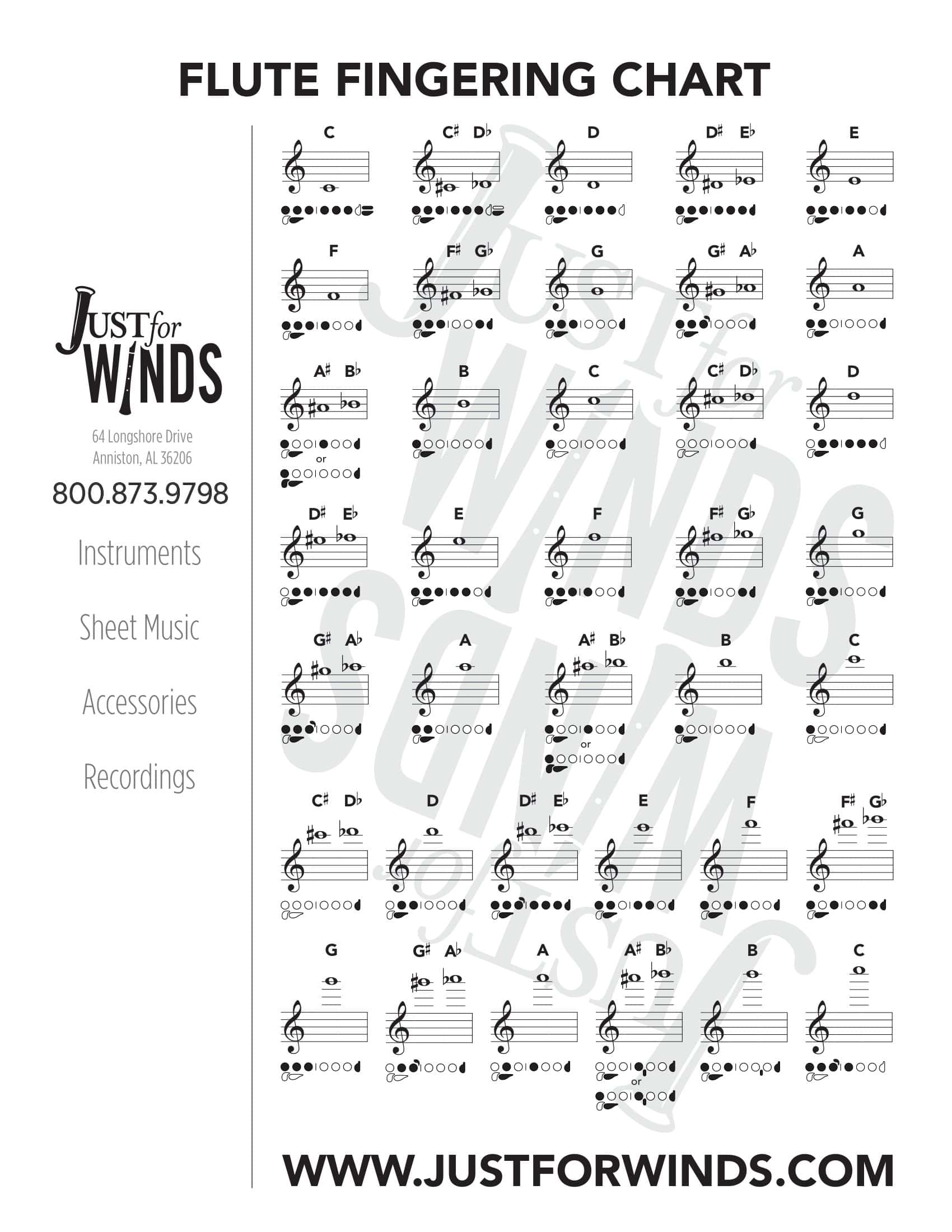








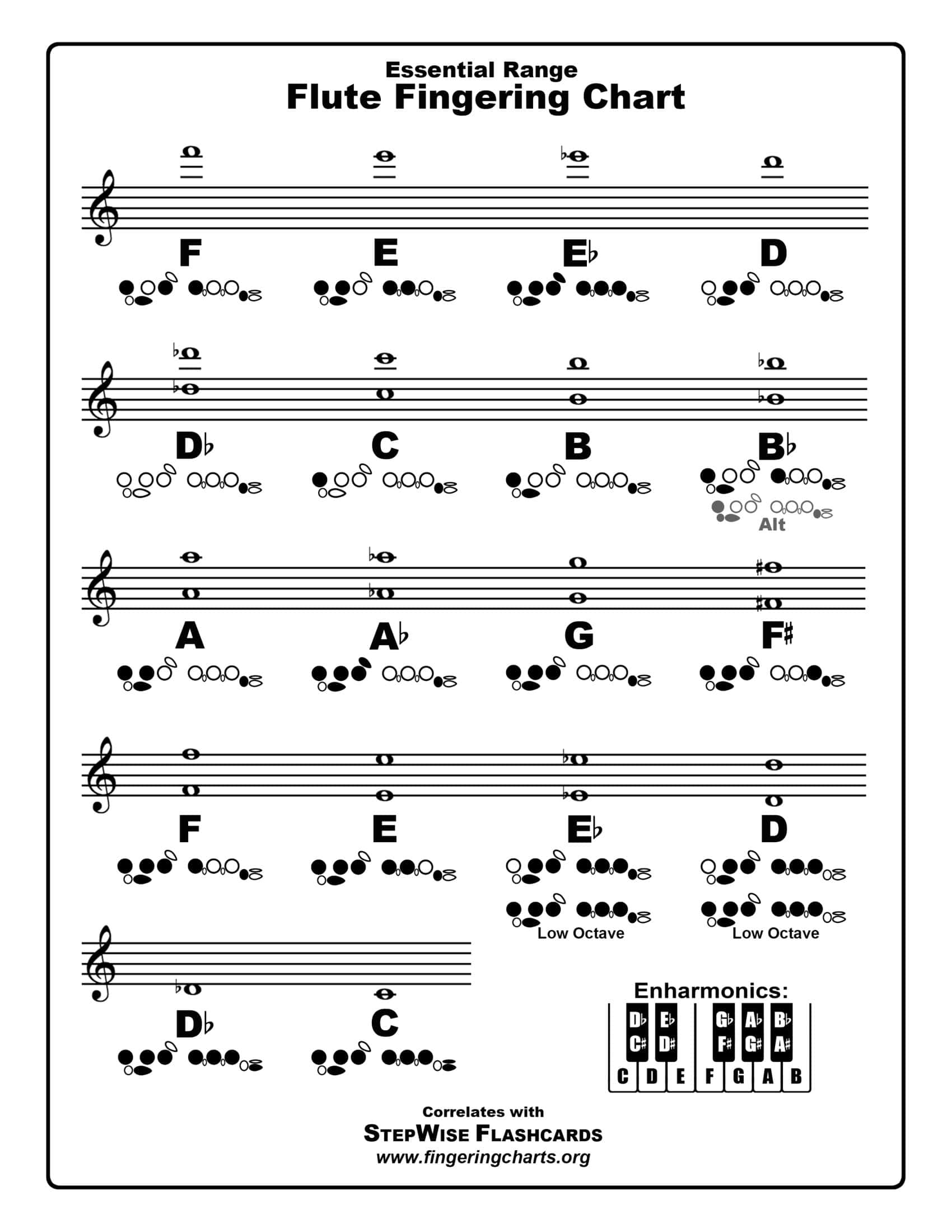










![Free Printable Morse Code Charts [Numbers, Alphabet] 1 Morse Code Chart](https://www.typecalendar.com/wp-content/uploads/2023/09/Morse-Code-Chart-150x150.jpg)


